When we left Seoul at the end of March, the cherry trees and other spring blossoms were just about in full bloom. On our last morning, we woke up early to go down to Yangjaecheon Stream and stroll amongst the cherry blossoms and golden forsythia bushes lining the water. Our son ran down the banks of the stream luxuriating in the beauty of spring in our motherland.
The spring blossoms were early this year, quite early, which was maybe fortuitous for us as visitors at the end of an extended stay – but these trees are also a florid siren song for climate change. We would expect the blossoms to peak in April and it seems that each year, cherry blossom season from Korea to Kyoto to Washington D.C. is shifting earlier and earlier. (Here’s a concerning Washington Post article on D.C.’s cherry trees and the effects of climate change on their health and longevity.)
It was much warmer in Korea and Japan this trip than we had anticipated. Coats were left untouched in our suitcases for a month. And while who doesn’t enjoy spring weather after a cold or rain-soaked winter, there is something ominous to me about these undeniable changes in the seasons. I worry for the farmers we know at home in California especially and wonder how this summer will be after last year’s drought and scorching temperatures.
As cooks and restaurant owners, we cannot help but see the effects of climate change in the farmers markets, what we hear from our farmer friends, and we think about what we can do as individuals and business owners to lessen our impact on the environment. We drive a fully electric car and we rarely eat meat at home. However, our restaurant, Shiku, serves meat, including beef. It was a very difficult decision for us to go in this direction. We try to, I suppose, atone for this sin by setting up Shiku to make monthly donations to community organizations, with climate change as one of the primary areas which we support.
There’s so much more we can do in our daily lives, we know. I would love to hear your thoughts on what we as individuals can do to slow down, reverse, fight off climate change or organizations you particularly like who are working to effect real change in this field.
Eat More Plants
Intentional, mindful eating with a focus on plants is one clear choice we can make as individuals to lessen our impact on the environment. Before Michael Pollan (whose work I admire greatly), Korean Buddhist monks and nuns have been living these principles and developing Korean temple cuisine for over 700 years.
나물 namul, or greens (sometimes translated as grasses and leaves), are a defining part of Korean cuisine. For many (including the official gatekeepers, the emphasis on and wide variety of namul is as significant and unique to Korean cuisine as kimchi. We eat namul raw or cooked, from fresh or from dried, pickled, blanched or fried with a thousand variations in between. There are even government-designated Grand Masters of namul in Korea who are championing the beauty and importance of namul to Korean culture. Simply, a Korean meal is incomplete without namul.
With spring blossoms in Korea comes the queen of all namul that is 봄나물 bom namul, the spring namul that is so rare in the US. I make a point to plan visits to Korea during this fleeting spring season so I can eat all of the bom namul prepared in a multitude of ways. Since many of these greens are not readily available outside of Korea, here’s a brief introduction to some of my favourites…
DUREUP 두릅
Dureup 두릅 are the young shoots of the Aralia elata tree. Slightly bitter, they are often blanched in Korea to remove some of the astringency. I’ve also had dureup lightly battered and fried, both in Korea and in Japan where dureup is known as taranome.
달래 DALLAE
Dallae 달래 are wild chives. The stalks (or stems? how does one describe chives) are quite fine and the entire plant is used, including the bulb and roots, so they must be cleaned meticulously. These can be used as you would use garlic chives or scallions though the flavor is more delicate. A signature use of dallae is 달래간장 dallae ganjang (wild chive soy sauce). If some of you have access to dallae, I’m happy to share our recipe for dallae ganjang, which we have sold at our restaurant, Shiku. This dallae ganjang is wonderful as a dipping sauce for jeon or Korean pancakes and as a general seasoning for any fresh dish calling for soy sauce really.
냉이 NAENGI
냉이 naengi is known as shepherd’s purse in English. We also eat the entire plant including the roots. Korean namul culture is zero waste at its core. Blanched before seasoning because of its bitterness, naengi was one of our most popular banchan that we sold at the beginning of Shiku. Kwang also makes a naengi pesto that is fragrant with a hint of refreshing astringency that he’s used in various dishes for many years. I also love naengi in 된장찌개 doenjang jjigae, or Korean fermented soybean paste stew. The aroma of naengi lends the stew a unique herbal quality that I adore, especially when my mother-in-law makes it!
Naengi is quite expensive to acquire in the US, though when we were in Korea, wild naengi can be foraged seemingly everywhere. Shepherd’s purse is also found in Jiangnan cuisine from the region surrounding Shanghai and called 荠菜 qicai. I’ve had shepherd’s purse dumplings and soup cooked in the Jiangnan style and highly recommend these dishes if you’re fortunate enough to come across them.
쑥 SSUK
쑥 ssuk is usually translated as mugwort and sometimes wormwood. I’m not sure which name sounds better in English, so I’ll stick with ssuk. This herb is central to one of my first cooking memories in Korea. When I was a young child, my paternal grandmother still lived on a farm in Gwangju, and after we would squish around the rice fields, she would make 쑥개떡 ssuk gaedduk or ssuk rice cakes from scratch and with fresh ssuk. I still remember the gentle chew and fragrance of my halmoni’s rice cakes, these beautiful, rustic, jade-tinged discs. Rice cakes made with ssuk are still my favorite and if I pass by any, I will always buy a package.
Well, it seems I’ve only just begun recounting my favorite bom namul…. I’ll have to save a few more for next time. I’ll also share an easy recipe for 주먹밥 rice balls that my mother-in-law made with bom namul on our last night in Seoul. Leaving Korea with the taste of a mother’s home cooking is the only way I was going to leave.
xx Mina




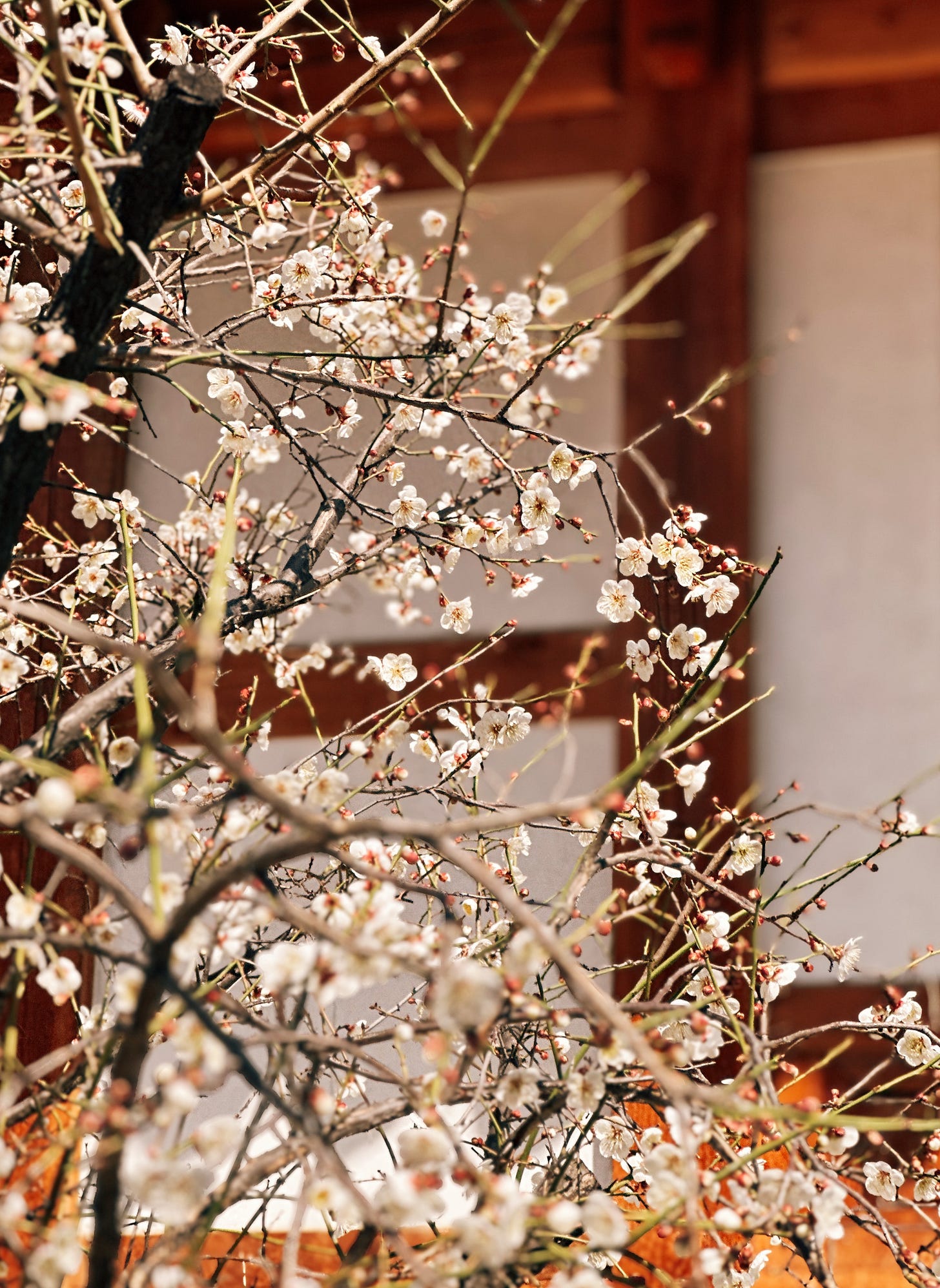
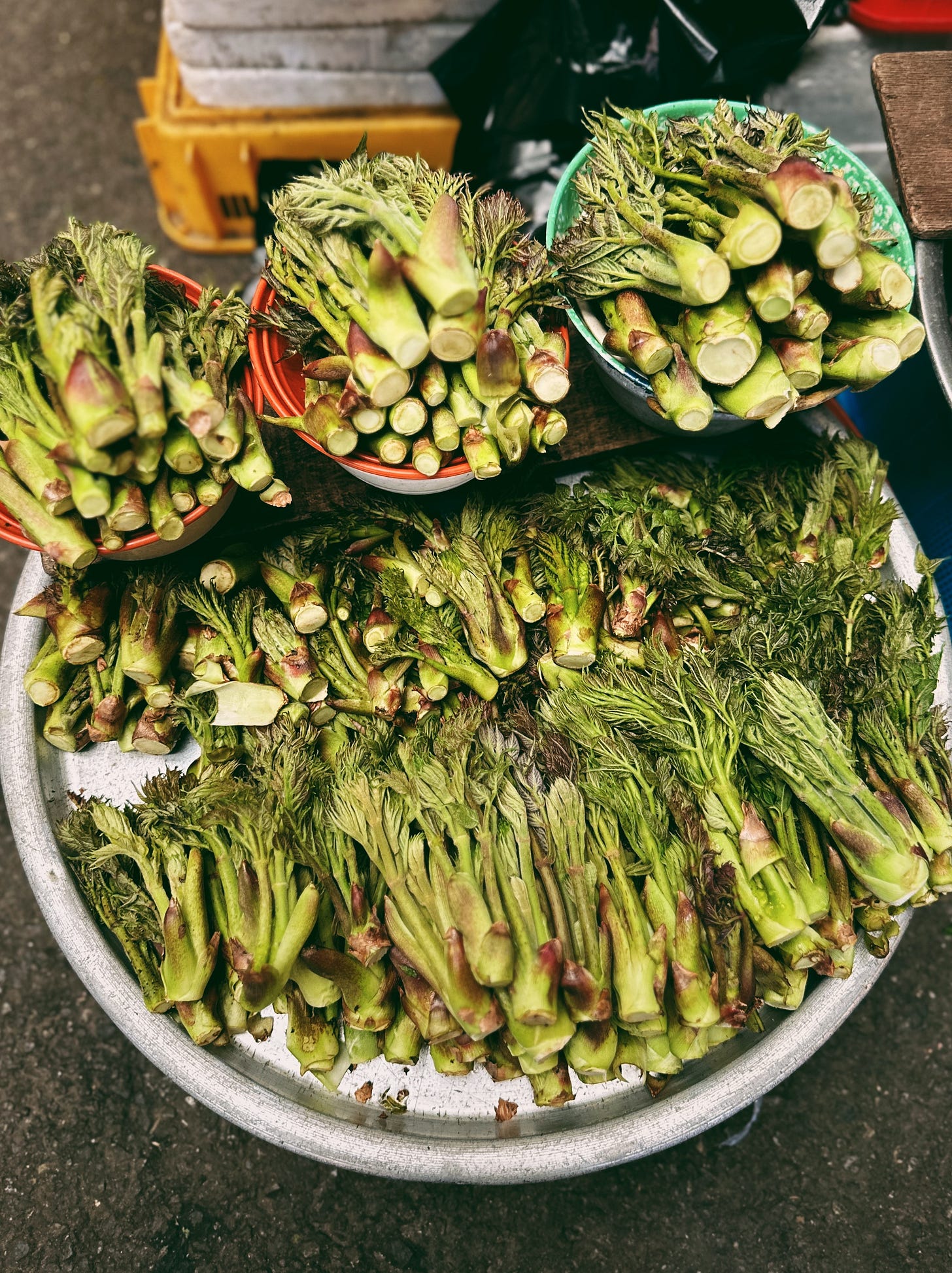
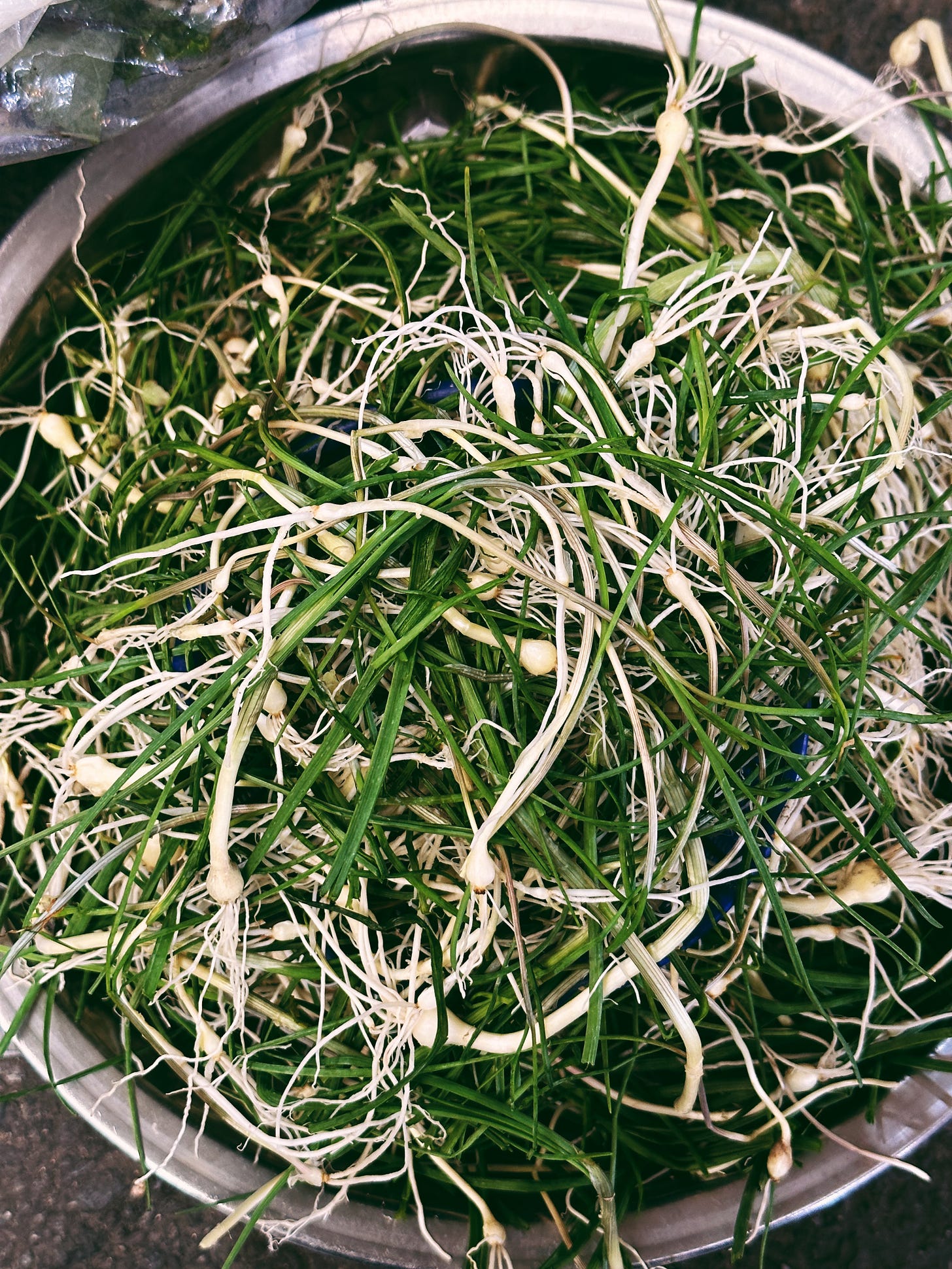

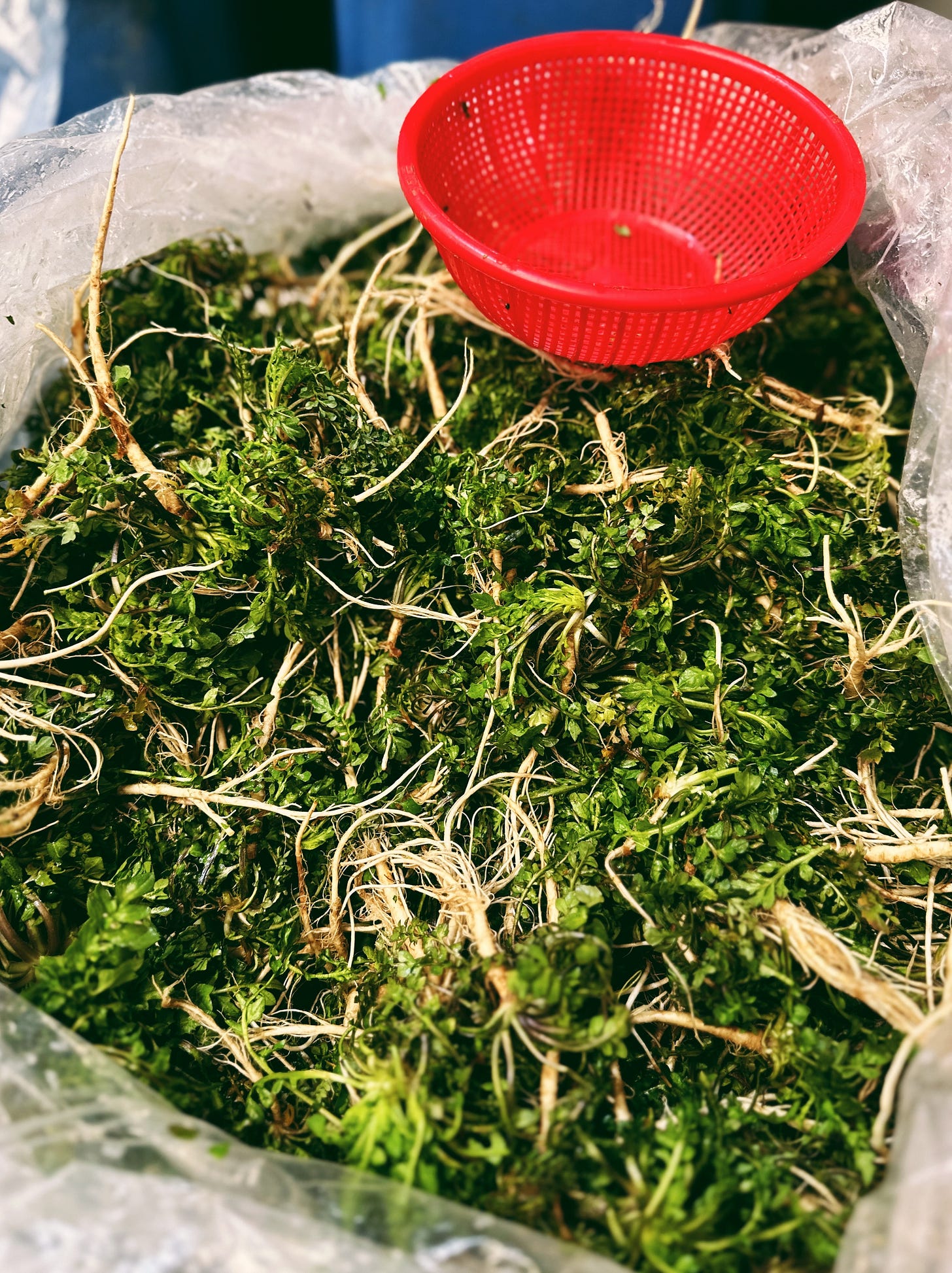
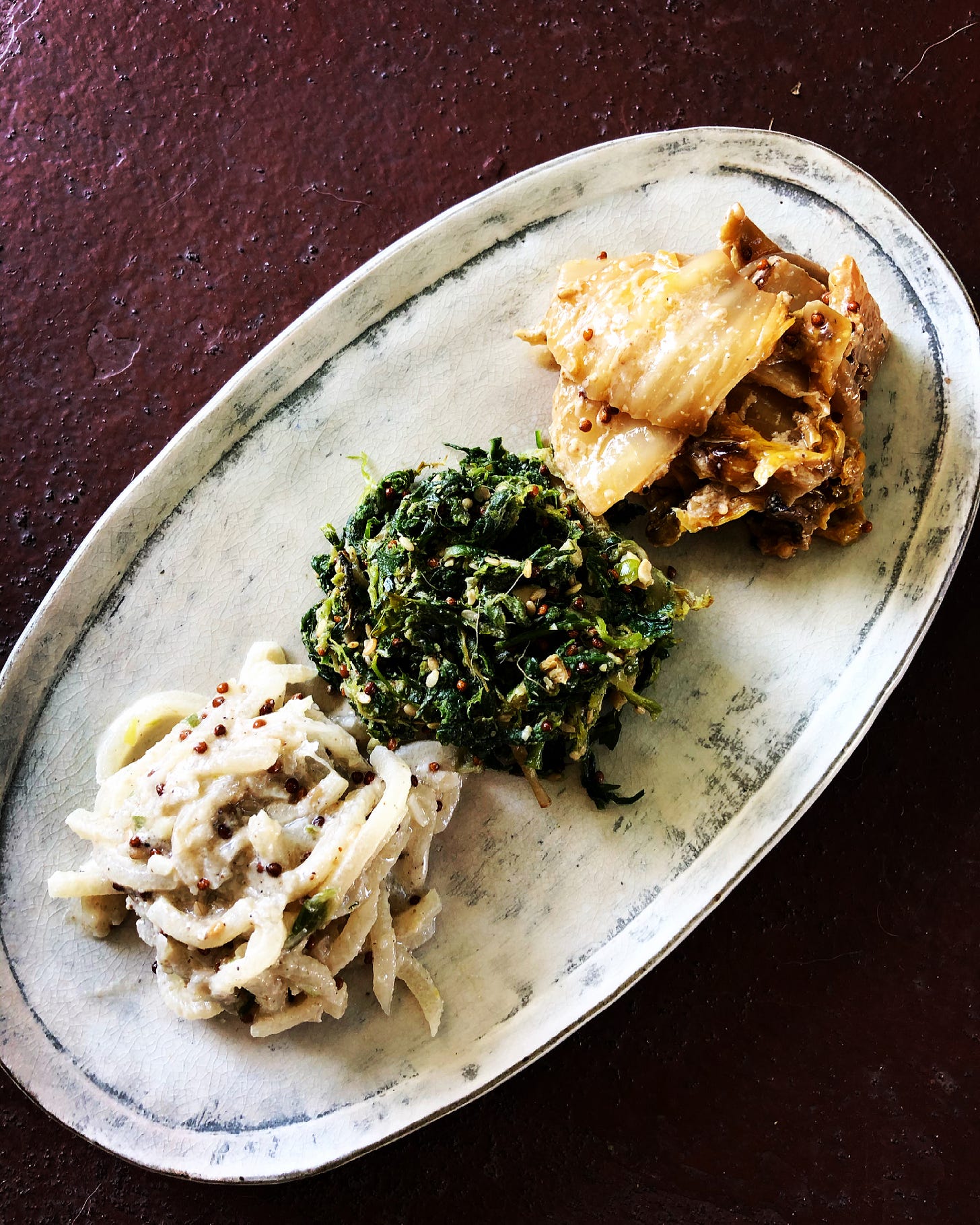
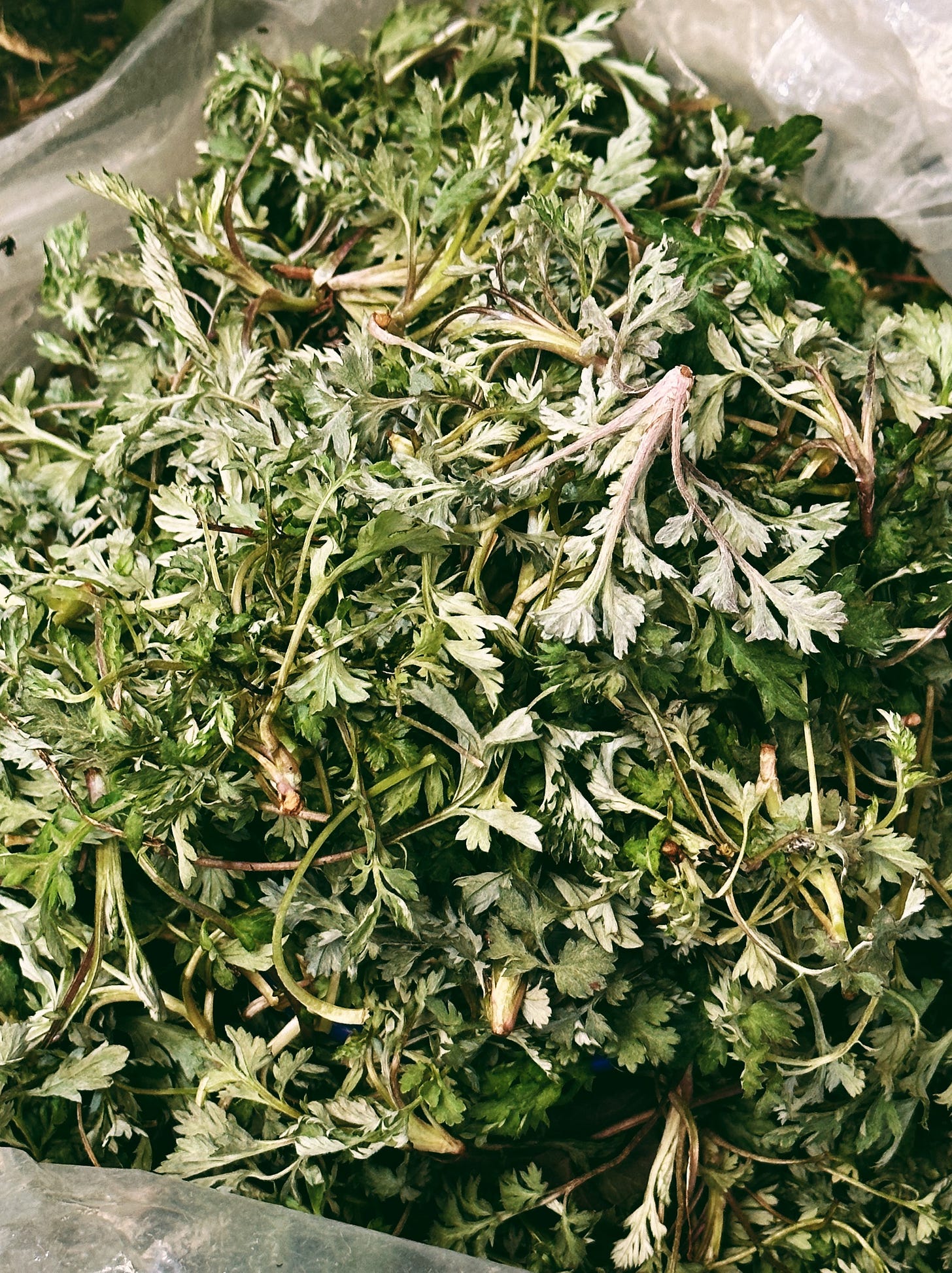
Mina - Thank you so very much for sharing so much information about Korean Namul!! I'd like to see an American native plant version spring up in the near future. For now, we've got Ramps and Nettle and Chickweed and .. and ... and (Am I confused?) Thanks again!!
https://cartercountrymeats.com/blogs/news
lots of ways to look at sustainability of meats. this is one.